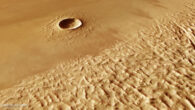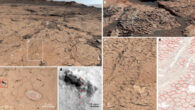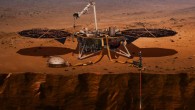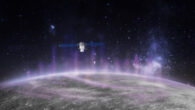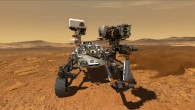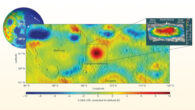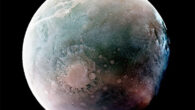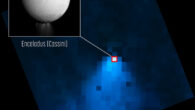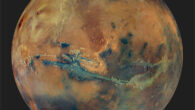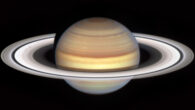Jupiter’s icy moon Europa has an ocean beneath a crust of water ice. Solid carbon dioxide has previously been observed on the surface, but the source was unknown. Two teams analyzed infrared spectroscopic data of Europa from the NASA/ESA/CSA James Webb Space Telescope to investigate the source of carbon dioxide. Webb identified carbon dioxide on the icy surface of Europa that likely originated in the moon’s subsurface ocean. Image credit: Geronimo...




